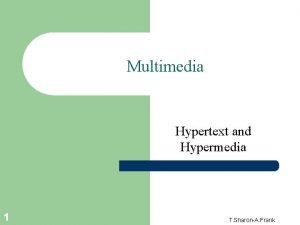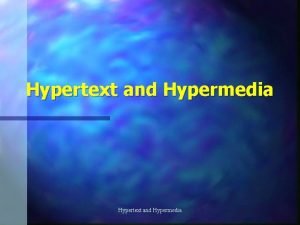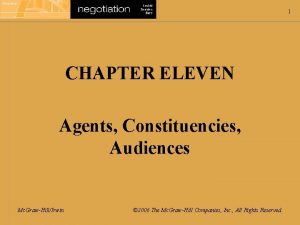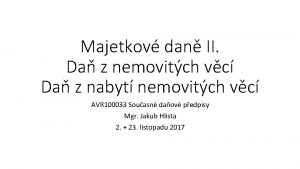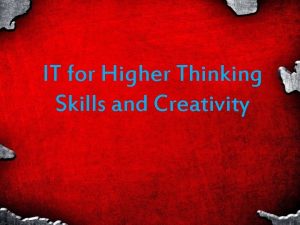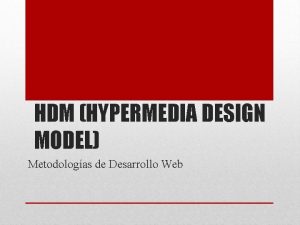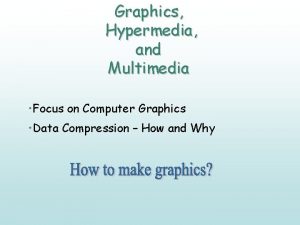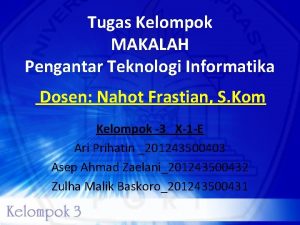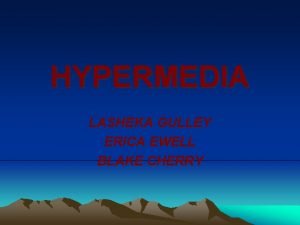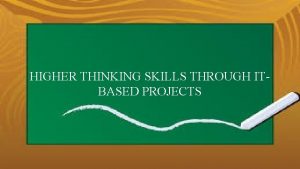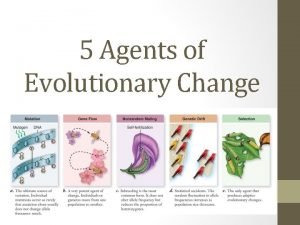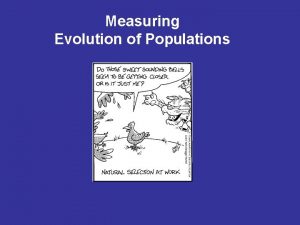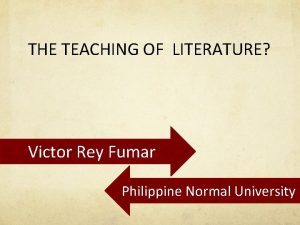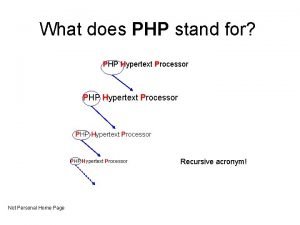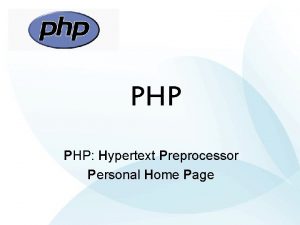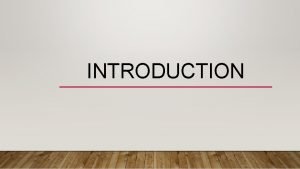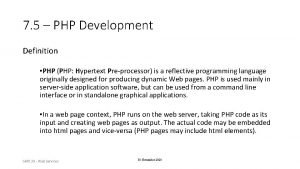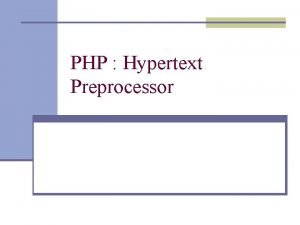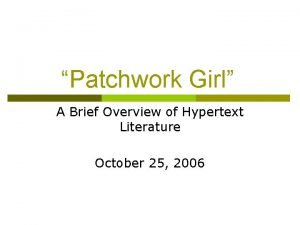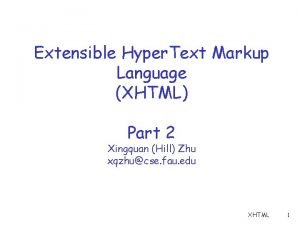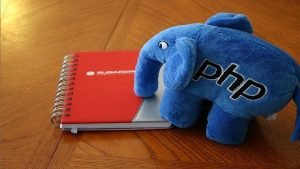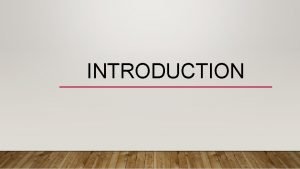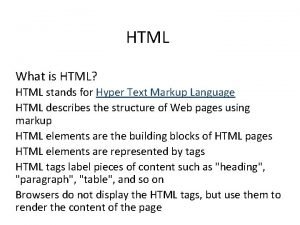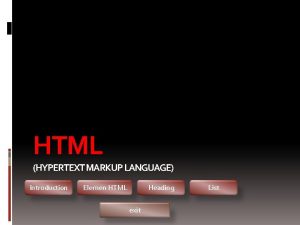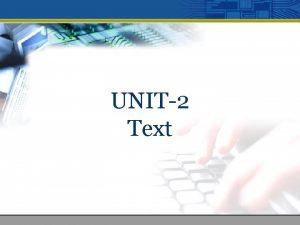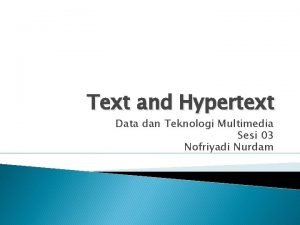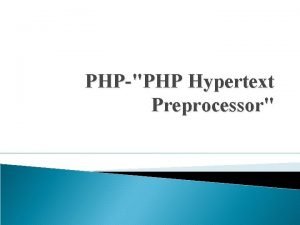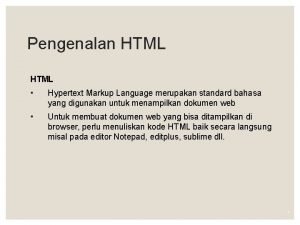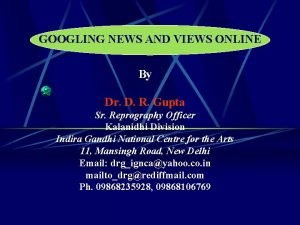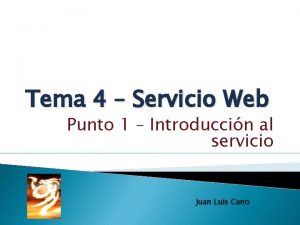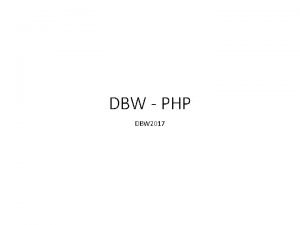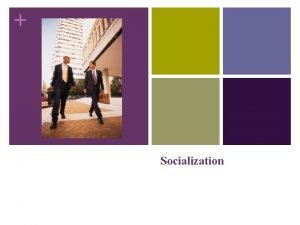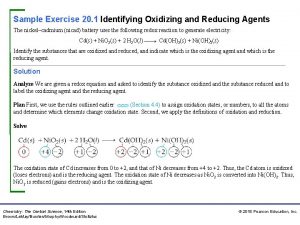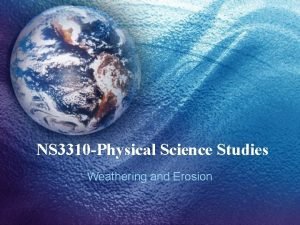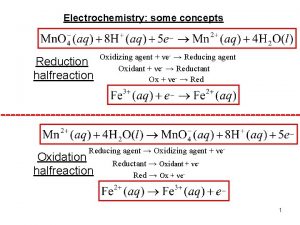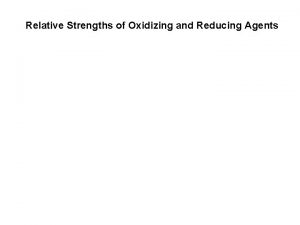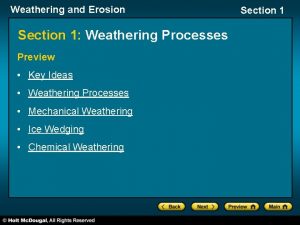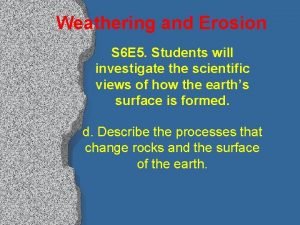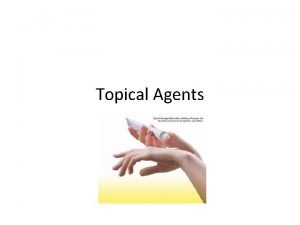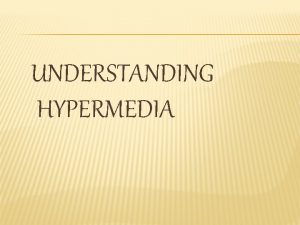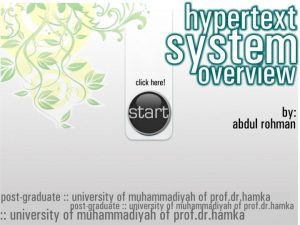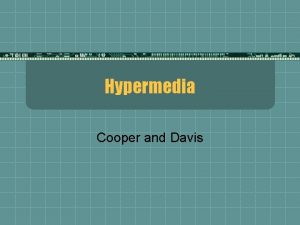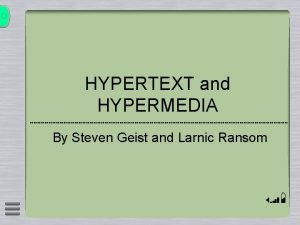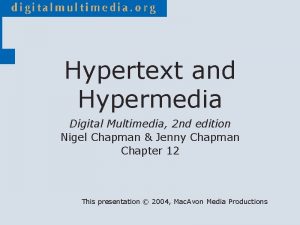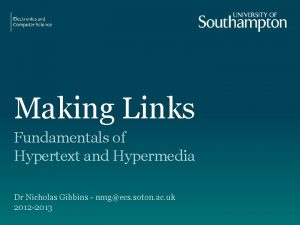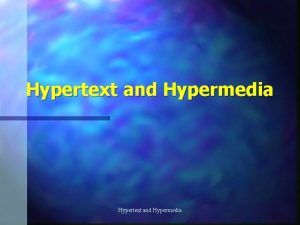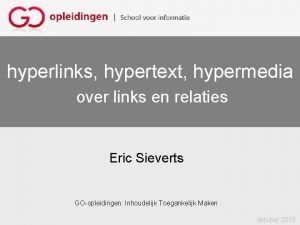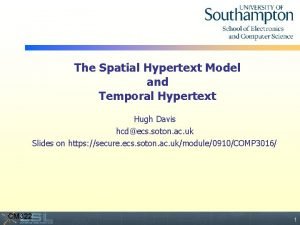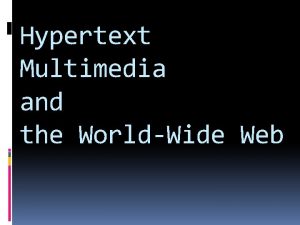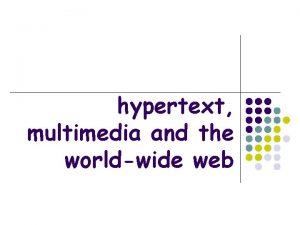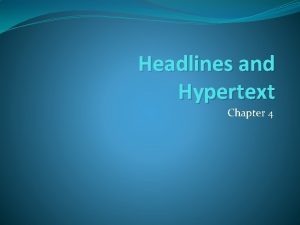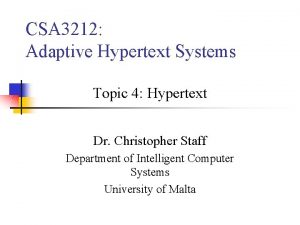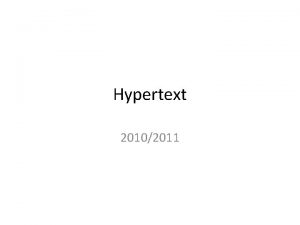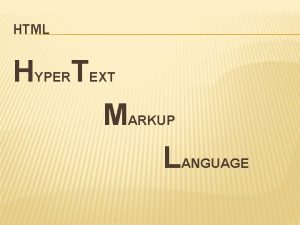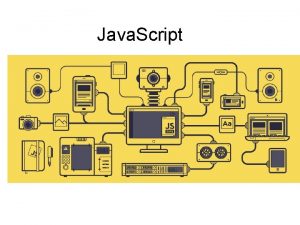Hypermedia and Hypertext as Agents of Change Dr


































































- Slides: 66

Hypermedia and Hypertext as Agents of Change Dr. Christopher Staff (cstaff@cs. um. edu. mt) Dept. Computer Science & AI Faculty of Science http: //www. cs. um. edu. mt/~cstaff/courses/med. ppt

Lecture Outline • This lecture… – Multimedia/hypermedia (ICT) have been vaunted as technologies which will change the way we learn for the better – But how good are we humans at making accurate predictions?

Lecture Outline – To understand the potential of multimedia/hypermedia, we will look at their history – And because this is about ICT in Education we will also briefly cover the history of Computer. Based Learning (Computer-Aided Instruction, Distance Learning, Intelligent Tutoring Systems, e. Learning, …)

Lecture Outline • Next lecture… – Factors to consider in e. Learning – Overview of Intelligent Tutoring Systems – Changing roles of student and tutor/teacher

Predictions Gone Wrong • "I think there is a world market for maybe five computers. " Thomas Watson, chairman of IBM, 1943

Predictions Gone Wrong • "There is no reason anyone would want a computer in their home. "Ken Olson, President, Chairman/Founder of Digital Equipment Corp. , 1977.

Predictions Gone Wrong “Fellow men! I promise to show the means of creating a paradise within ten years, where everything desirable for human life may be had by every man in superabundance, without labour, and without pay; where the whole face of nature shall be changed into the most beautiful of forms, and man may live in the most magnificent palaces, in all imaginable refinements of luxury, and in the most delightful gardens; where he may accomplish, without labour, in one year, more than hitherto could be done in thousands of years. ” Writer, J. A. Etzler in 1842 about the steam engine.

Predictions Gone Wrong "De Forest has said in many newspapers and over his signature that it would be possible to transmit human voice across the Atlantic before many years. Based on these absurd and deliberately misleading statements, the misguided public. . . has been persuaded to purchase stock in his company. . . ” District Attorney, State vs. Lee de Forest, 1913. (de Forest invented the audion tube) (from http: //www. foresight. org/News/negative. Comments. html)

Predictions about Multimedia and Hypermedia in Education • • Edutainment creates students eager to learn Students can be given closer attention Knowledge retention rates will be higher Students can receive education wherever and whenever they like • Students can choose their own learning path • The demise of the classroom-based teacher

Who said this and about what? “Those who acquire it will cease to exercise their memory and become forgetful; they will rely on [it] to bring things to their remembrance by external signs instead of on their own resources… it shows great folly… to suppose that one can transmit or acquire clear and certain knowledge of an art through the medium …, or that … [they] can do more than remind the … [person] of what he knows on any given subject”

Plato, on Writing “Those who acquire it will cease to exercise their memory and become forgetful; they will rely on writing to bring things to their remembrance by external signs instead of on their own resources… it shows great folly… to suppose that one can transmit or acquire clear and certain knowledge of an art through the medium of writing, or that written words can do more than remind the reader of what he knows on any given subject” Plato, c. 360 BC (cited in Russell, 2001)

The History of… • Hypermedia • Multimedia • Computer-based Learning

Some definitions • Multimedia “The co-occurrence of discrete and continuous data” We are multi-sensory beings We expect to receive information via multiple, simultaneous, complementary media

Some definitions • Hypertext “non-sequential writing” Nelson, T. 1987. Literary Machines. We are familiar with non-linear sequences of information (dictionary, encyclopaedia, newspaper) (Hypermedia = Hypertext + Multimedia)

Psychology of Perception • We have a narrow sense of perception • Our senses are tuned to alert us to “danger” • Processing information in our visual, aural, etc. , fields is expensive • Our bodies are designed to process information efficiently and effectively

“Cost” of multimedia processing • Graphics: resolution x colour depth – E. g. , 640 x 480 x 24 = 900 KB • Video: res x colour depth x fps x duration – 640 x 480 x 24 x 25 fps x 1 sec = 21. 97 MB

Principles • Hypertext/hypermedia should be designed for efficiency and effectiveness • Instead, information is “hidden” from us and we must make decisions about whether to read it • Can actually increase cognitive load! • Adaptive hypertext…

History of Hypertext • 1945: Vannevar Bush describes “memex” (Atlantic Monthly) • 1962: Engelbart describes AUGMENT • 1965: Ted Nelson coins the term “hypertext” • 1968: Van Dam + others at Brown University develop Hypertext Editing System and File Retrieval and Editing System

History of Hypertext • 1983: First 2 nd generation hypertext systems - Intermedia and KMS • 1985: Peter Brown, University of Kent, develops first commercially available hypertext - Guide • 1987: Prototype of Nelson’s Project Xanadu • 1986 -1990: More sophisticated hypertext systems developed

History of Hypertext • 1991: Tim Berners-Lee builds IP-based distributed hypertext system at CERN Develops UDI/URI, HTTP, and HTML… • 1993: Mosaic, first graphical Web browser, released • 2002: Work begins on Semantic Web • 2003: Proposals for Adaptive Web

Hypertext meets Multimedia • History of multimedia dependant mainly on wide-spread availability of “home” computers able to support non-textual data • Introduction of CD-ROM was an important step (cheaply available mass storage) • Hypermedia should allow links into and out of non-textual data…

Computer-based Learning • Early systems used “flash cards” • Students tested at end of session: failures were re-exposed to material • In 1987, Wenger criticises computer-based learning systems and identifies their implicit and explicit goals • Leads to development of modern Intelligent Tutoring Systems

Computer-based Learning • Wenger’s “dream” incorporates hypermedia: “imagine active books that can interact with the reader to communicate knowledge at the appropriate level, selectively highlighting the interconnectedness and ramifications of items, recalling relevant information, probing understanding, explaining difficult areas in more depth, skipping over seemingly known material. . . intelligent knowledge communication systems are indeed an attractive dream” Wenger, E. 1987. Artificial Intelligence and Tutoring Systems

Computer-based Learning • It is little surprise, then, that modern Adaptive Hypertext Systems have some of their roots in Intelligent Tutoring Systems…

Agent of Change "ICT is not an end in itself or an agent of change by itself but when incorporated into a well managed change process it is a powerful enabler and amplifier. " Bryn Jones, http: //www. apple. com. au/education/k 12/ade/biographies/. See also A learning technologies guidebook, http: //purple. nd. edu. au/coms/bj/techplan/ltguide. htm

End of first lecture

Agent of Change "ICT is not an end in itself or an agent of change by itself but when incorporated into a well managed change process it is a powerful enabler and amplifier. " Bryn Jones, http: //www. apple. com. au/education/k 12/ade/biographies/. See also A learning technologies guidebook, http: //purple. nd. edu. au/coms/bj/techplan/ltguide. htm

Immediacy and Insatiability • New media, new communication platforms, mobile telephony, everything connected all the time… • Mediated experiences… • … have created an expectation that every desire, every wish, every demand, can and shall be satisfied instantly • The same expectations now exist in education…

ICT in the Classroom and e. Learning

ICT in the Classroom • Introduced with the promise that children, normally in primary, secondary schools, will receive a better education • Not the focus of this lecture… • … but educational programmes are only as good as the designers who make them, and the teachers who use them • The mere presence of a computer in a classroom does not create better students…

“The future of interactive media in education… is that of communication tool” Radford, A. “The Future of Multimedia in Education”

e. Learning • Connecting tutors and students who cannot be in the same place at the same time… • Giving remote students access to support • Shifting some of the responsibility for “education” onto computers

Factors • • • Student motivation/discipline Student can communicate well in writing Student potentially in control of their learning path Tutor/Teacher as guide/learning manager "Computer" responsible for knowledge transfer Don't lose sight of the human element. We are social animals! • Computer vs. human in control of pedagogy • Many courses are designed by others and given to teachers to deliver (e. g. , BTEC Edexcel at MCAST, NCC at Swatar, etc. )

Degrees of Support • • From video streaming individual lectures… … to fully-fledged ITS From individual self-contained courses… … to full degrees from on-line Universities

Ellul, 2001: My Virtual Classroom

Virtual University

Intelligent Tutoring Systems • Student learns by problem solving • ITS selects a problem – compares solution to student’s • Performs diagnosis based on the differences • Gives feedback, reassesses student and updates the student skills model • ITS also considers what the student needs to know, which part of the curriculum to teach next, and how to present the material • It then selects the next problem

Intelligent Tutoring Systems

Intelligent Tutoring Systems • ITS is responsible for: – Knowledge communication – Student assessment – Pedagogy

Intelligent Tutoring Systems • ITS must know the aims, objectives, goals of the student • ITS must know the current knowledge of the student • ITS must know about the domain • ITS must devise a plan to move the student from current state to desired state • ITS must be able to assess the student’s progress

Domain Expert • The ITS must know the domain • It must know how knowledge items are related • It must be able to represent interdependencies between knowledge items • Assumption that Domain Expert represents (complete) knowledge of the domain, and that the student’s goal is to acquire (all of) it

Domain Expert • Domain expertise must be machine processable, to allow system to “reason” • Common representation formats include: – If-Then rules with uncertainty measures – Semantic networks – Frame-based Representations (Cases)

Modelling the student • Need to represent student’s knowledge • Need to record student’s progress • Ideally, when student makes mistakes, ITS can automatically discover why and take remedial action

Modelling the student • Student model can gather information implicitly or explicitly • Must compare student’s knowledge to the expert’s knowledge (usually to highlight differences) • If differences indicate misconceptions, ITS must decide how to take remedial action

Student Model Architectures • Overlay • Differential • Perturbation

Overlay Student Models • Teaching material represented as prerequisite hierarchy • Student’s knowledge assumed to be subset of expert’s • Goal is to move student’s knowledge to expert’s knowledge • No mechanism to differentiate between knowledge S doesn’t understand S hasn’t yet been exposed to

Differential Student Models • Distinguishes between Knowledge S does not understand K S has not been exposed to • Does not cater for misconceptions or “bugs”

Perturbation Student Models • Caters for K possessed by S which is not in Expert’s knowledge • E’s domain knowledge is extended with “bug library” – “Bugs” are typical mistakes made by students – Bug lib. can either be list of bugs (enumerative) or generated from an underlying cognitive theory (generative)

Student Model Diagnosis • Performance measuring – “Test” • Model tracing • Issue tracing • Expert systems

Model Tracing • Gives advice when student diverges from acceptable solution paths • Aims to change student behaviour

Issue Tracing • Variation of model tracing • Problem solving episode is analysed to determine which skills or issues have been used • Does not require deep model of problem solving

Expert Systems • Used to analyse answers/conclusions drawn by student • Conclusions of ES are used to maintain student model

Pedagogical Expertise • Used to decide how to • present/sequence information • answer questions/give explanations • provide help/guidance/remediation

Pedagogical Expertise According to Wenger, when "learning is viewed as successive transitions between knowledge states, the purpose of teaching is accordingly to facilitate the student's traversal of the space of knowledge states. " (Wenger, E. , 1987, p. 365)

Pedagogical Expertise • The ITS must model the student's current knowledge and support the transition to a new knowledge state. • ITSs must alternate between diagnostic and didactic support.

Diagnostic Support • Information about a student's state is inferred on 3 levels – Behavioural - ignores learner's knowledge, and concentrates on observed behaviour – Epistemic - attempts to infer learner's knowledge state based on learner's behaviour – Individual - cognitive model of learner's state, attitudes (to self, world, ITS), motivation

Didactic Support • Concerned with the "delivery" aspect of teaching

The changing roles of teacher and student • Assume that ICT enables dislocated students to gain access to educational material that would have otherwise required (face-toface) access to a tutor: • How are the roles of tutor/teacher and student changed?

How is the student likely to change? • Learn independently? • Learn outside the classroom? • Student does not start as an “empty vessel” to be filled with teacher’s knowledge (but compare with ITS models!) • “Active participants and partners in the learning process”

How will teacher/tutor change? • Traditionally, in the classroom, the teacher is normally the “sage on the stage” • With students changing the way they learn, teachers will become”the guide from the side” • Questioning, investigation, problem solving, rather than basic “knowledge communication” likely to become main classroom activities http: //ausweb. scu. edu. au/aw 96/educn/carrucan/ http: //www. apple. com/ca/education/huron/

How will teacher/tutor change? • Identifying “knowledge trails” through hyperspace • Teaching how to be good discriminators of information

How will teacher/tutor change? • When the learning is performed at a distance, there may be no face-to-face contact • But remember that technology should be used to improve communications, not worsen it!

How will teacher/tutor change? • Students need greater support, otherwise they will feel isolated • Demotivated students need to be identified and supported • Students cannot (yet!) be supervised while they accomplish some task - diminished opportunity for correcting mistakes as they occur

Technology • Reliable technology may also be essential • Increased frustration with technology may reduce the desire to learn


Conclusion "What we cannot expect from ICT is a universal panacea that can be poured into schools to raise standards. The impact that using ICT has depends on what you do with it, and what you hope to achieve. Much of the evidence suggests that the learning benefits are skills rather than knowledge oriented, and may not be captured by current assessment methods. If that is so, the question will be do we change the use of the ICT, or do we change the assessment? ” http: //www. schoolzone. co. uk/teachers/jft/Good. Practice/classroom/ICT/Expect. htm
 Hypertext and hypermedia in multimedia
Hypertext and hypermedia in multimedia Hypermedia definition
Hypermedia definition Hypertext in print media example
Hypertext in print media example Hypermedia vs hypertext
Hypermedia vs hypertext Hypertext vs hypermedia
Hypertext vs hypermedia How agents, constituents and audiences change negotiations?
How agents, constituents and audiences change negotiations? Hypermedia insolvence
Hypermedia insolvence It for higher thinking skills and creativity
It for higher thinking skills and creativity Hypermedia design
Hypermedia design Hypermedia in computer graphics
Hypermedia in computer graphics Makalah hypermedia
Makalah hypermedia Cherry hypermedia
Cherry hypermedia Higher thinking skills through it based projects
Higher thinking skills through it based projects 5 agents of evolutionary change
5 agents of evolutionary change 5 agents of evolutionary change
5 agents of evolutionary change It is a digital poetry that uses links and hypertext markup
It is a digital poetry that uses links and hypertext markup What does php stand for
What does php stand for Personal hypertext processor
Personal hypertext processor What is preprocessor in php
What is preprocessor in php Definition of php
Definition of php All prepocessor commands begin with a
All prepocessor commands begin with a Patchwork girl hypertext
Patchwork girl hypertext Extensible hypertext markup language
Extensible hypertext markup language Php stands for hypertext pre-processor. *
Php stands for hypertext pre-processor. * Php hypertext preprocessor
Php hypertext preprocessor Introduction of html
Introduction of html Format yang dipakai untuk membuat dokumen hypertext
Format yang dipakai untuk membuat dokumen hypertext Example of hypertext
Example of hypertext Hypertext
Hypertext Phpphp
Phpphp Standar format untuk dokumen hypertext
Standar format untuk dokumen hypertext Advantages of hypertext
Advantages of hypertext Hypertext significato
Hypertext significato Php hypertext processor
Php hypertext processor Physical change chemistry
Physical change chemistry Absolute change and relative change formula
Absolute change and relative change formula Whats the difference between chemical and physical change
Whats the difference between chemical and physical change Change in supply and change in quantity supplied
Change in supply and change in quantity supplied Physical change and chemical change
Physical change and chemical change Rocks change due to temperature and pressure change
Rocks change due to temperature and pressure change Whats chemical change
Whats chemical change First-order and second-order change examples
First-order and second-order change examples Agents of socialization
Agents of socialization How to identify the oxidizing agent
How to identify the oxidizing agent Oxidizing vs reducing agent
Oxidizing vs reducing agent Agents of weathering
Agents of weathering What is oxidation agent
What is oxidation agent Differentiate between oxidizing and reducing agents
Differentiate between oxidizing and reducing agents Model-based reflex agents examples
Model-based reflex agents examples Relative strengths of oxidizing and reducing agents
Relative strengths of oxidizing and reducing agents Painting a wall chemical or physical change
Painting a wall chemical or physical change Define integers
Define integers Quantity supplied vs supply
Quantity supplied vs supply Enagic comp plan
Enagic comp plan Proactive vs reactive change
Proactive vs reactive change Spare change physical versus chemical change
Spare change physical versus chemical change Physical change
Physical change Cake chemical change
Cake chemical change Chopping wood is a chemical change
Chopping wood is a chemical change Climate change 2014 mitigation of climate change
Climate change 2014 mitigation of climate change 5 agents of erosion
5 agents of erosion Ventilex medication
Ventilex medication Networked insurance agents
Networked insurance agents Agents of erosion
Agents of erosion Identify three agents of mechanical weathering
Identify three agents of mechanical weathering Hydrolysis of feldspar
Hydrolysis of feldspar Topical definition
Topical definition
